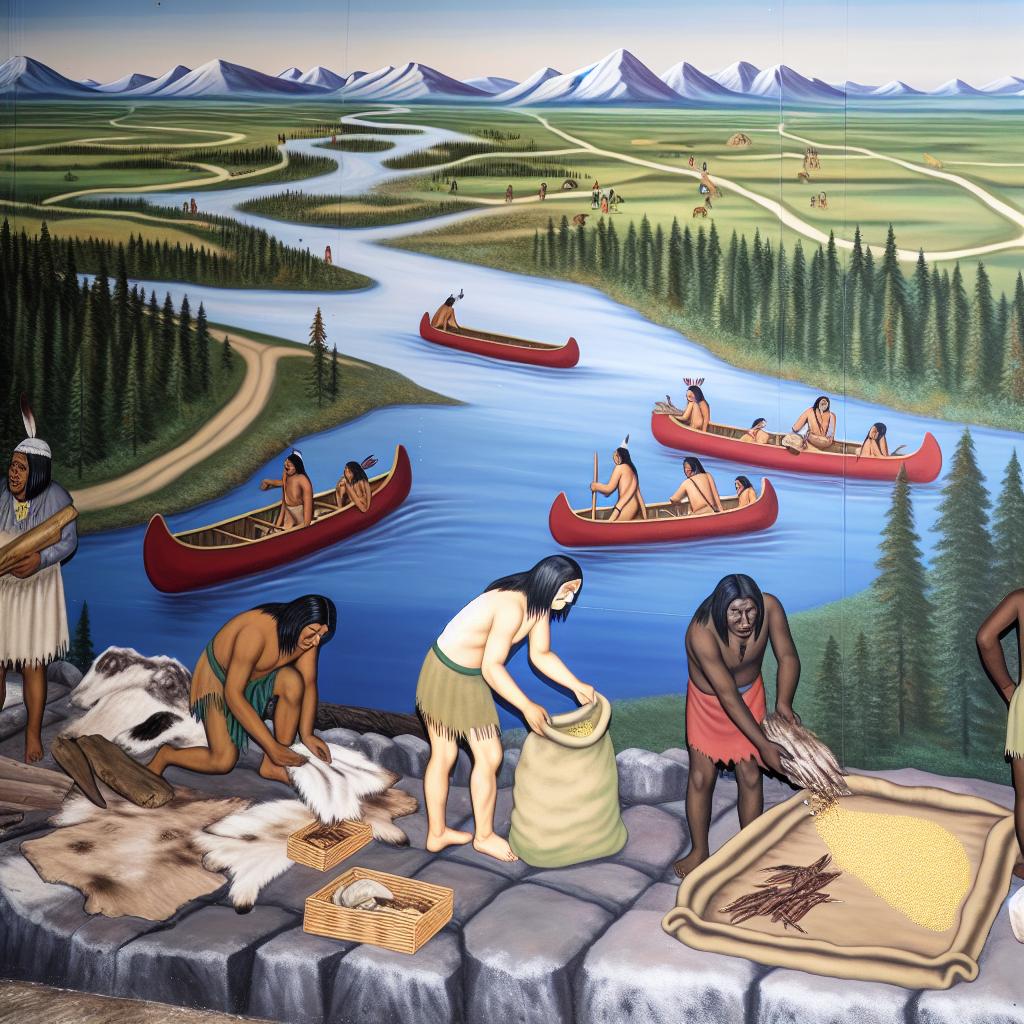Introduction to Native American Trade Routes
The intricate network of trade routes developed by Native American societies long before European contact highlights their sophisticated economic systems and the diversity of goods exchanged across vast distances. These trade routes were not merely paths for the exchange of goods but also facilitated the spread of ideas, technology, and cultural practices.
Major Trade Networks
Trade networks among Native American societies were varied and extensive. These networks encapsulated the complexity and sophistication of their economic and cultural interactions.
Mesoamerican Influence
The civilizations in present-day Mexico and Central America, known as the Mesoamerican cultures, significantly influenced the trade routes stretching into North America. This influence was primarily due to their advanced agricultural systems and developed urban centers, which facilitated organized commerce. The vibrant Mesoamerican trade system was crucial in dispersing goods across a wide area. These networks helped in the dissemination of several high-demand items.
For example, *cacao*, the source of chocolate, was not only used as a food but also served as currency in various Mesoamerican cultures. Meanwhile, *turquoise*, treasured for its beauty, was traded extensively from mines in the American Southwest. *Obsidian*, a volcanic glass crucial for making sharp tools and ceremonial objects, moved along these networks connecting cultures far from its geological origins. These commodities were exchanged in vast marketplaces, indicating a complex socio-economic structure that connected diverse cultures through trade.
Mississippian Trade Network
The Mississippian culture, which flourished from approximately 800 AD to 1600 AD, established significant trade routes throughout the southeastern United States. The city of Cahokia, located near modern-day St. Louis, served as a major trade hub and a cultural epicenter. Cahokia’s central position allowed it to command a network of trade that stretched across various geographical regions.
From the Gulf of Mexico, *shells* were transported, which were often used in the creation of intricate jewelry and ceremonial objects. Regions near the Great Lakes supplied *copper*, a vital material for creating tools and decorative items, evidenced by the copper artifacts unearthed by archaeologists. *Mica*, from the Appalachian Mountains, known for its reflective quality, was used in religious and artistic contexts, thus adding another dimension to the cross-cultural exchange facilitated by these trade routes. The Mississippian trade network exemplifies how economic interactions bolstered cultural richness and technology transfer in pre-Columbian North America.
Puebloan Connections
In the southwestern United States, the Puebloan peoples established extensive trade networks connecting them with distant regions. Their societal structure supported a vibrant exchange system that reached across states. The demand for specific goods like *turquoise* was particularly significant, with this semi-precious stone being a prime export. Mines in present-day New Mexico and Arizona served as the main sources, showing the economic importance that the Puebloans placed on this trade item.
Moreover, the intricate system of roads built by the Ancestral Puebloans, such as the Chaco Road, illustrates advanced knowledge in civil engineering. These roads were pivotal for long-distance travel and trade across difficult terrains. Besides carrying goods, the exchange routes facilitated interactions and cultural exchanges between different communities, fostering a shared heritage that transcended regional boundaries.
Trade Goods and Cultural Exchange
The trade routes effectively transported a wide variety of goods, from utilitarian items to luxury materials. These goods included not just commodities but also elements that represented technological prowess and cultural practices.
Pottery and Tools: The exchange of pottery styles and the proliferation of tools like arrowheads and spear points underscore the level of skill and technological advancement achieved by different Native American societies. These objects also highlight shared cultural practices and aesthetic standards, as signified by the common motifs and styles that traveled alongside physical goods.
Perishables: Various perishable items, such as dried fish and meats, seeds, and other dried foods, were strategic trade goods. They provided sustenance and were vital in promoting agricultural knowledge. This type of exchange also supports the argument that the exchange routes influenced the dietary habits and agricultural practices across different communities.
Transportation Methods
Without horses, which were introduced by Europeans later on, Native Americans relied on innovative methods of transportation across their trade routes. They adeptly utilized the natural landscapes to enhance their trading efficiency.
Many of these routes ran parallel to natural pathways such as rivers and waterways, where *canoes* played a critical role, enabling the movement of both people and substantial quantities of goods over long distances. Canoes were designed with varying sizes and capacities, showcasing an understanding of hydrodynamics and boat construction that was sophisticated for its time.
On land, goods were often transported on foot, and *travois*, which are wooden frames used to carry loads, were employed. These structures were carried by people or sometimes dogs, reflecting an adaptation to the environment that increased the capacity to transport goods across challenging terrains. This method underscores the ingenuity and resilience in addressing logistical challenges prominent in the pre-European Americas.
Conclusion
The extensive trade routes of Native American societies demonstrate their capability to sustain vast, intricate networks for economic and cultural exchange. By understanding these routes, we gain insight into the complexities of indigenous societies and the interconnectedness of the Americas before European influence. This interconnectedness did not only cater to economic sustenance but also ensured a robust exchange of ideas, beliefs, and traditions. These networks played a crucial role not only in the distribution of goods but also in the formation of a rich tapestry of cultural exchanges. This cultural intermingling laid the foundation for the diverse cultural heritage witnessed in the Americas today, marking a significant chapter in the history of human civilization.

